 Weird Stuff
Weird Stuff  Weird Stuff
Weird Stuff  Our World
Our World 10 Ways Your Christmas Tree Is More Lit Than You Think
 Movies and TV
Movies and TV The 10 Coolest Stars to Set Sail on The Love Boat
 History
History 10 Things You Didn’t Know About the American National Anthem
 Technology
Technology Top 10 Everyday Tech Buzzwords That Hide a Darker Past
 Humans
Humans 10 Everyday Human Behaviors That Are Actually Survival Instincts
 Animals
Animals 10 Animals That Humiliated and Harmed Historical Leaders
 History
History 10 Most Influential Protests in Modern History
 Creepy
Creepy 10 More Representations of Death from Myth, Legend, and Folktale
 Technology
Technology 10 Scientific Breakthroughs of 2025 That’ll Change Everything
 Weird Stuff
Weird Stuff Ten Bizarre Facts About The Doge Meme
 Our World
Our World 10 Ways Your Christmas Tree Is More Lit Than You Think
 Movies and TV
Movies and TV The 10 Coolest Stars to Set Sail on The Love Boat
Who's Behind Listverse?

Jamie Frater
Head Editor
Jamie founded Listverse due to an insatiable desire to share fascinating, obscure, and bizarre facts. He has been a guest speaker on numerous national radio and television stations and is a five time published author.
More About Us History
History 10 Things You Didn’t Know About the American National Anthem
 Technology
Technology Top 10 Everyday Tech Buzzwords That Hide a Darker Past
 Humans
Humans 10 Everyday Human Behaviors That Are Actually Survival Instincts
 Animals
Animals 10 Animals That Humiliated and Harmed Historical Leaders
 History
History 10 Most Influential Protests in Modern History
 Creepy
Creepy 10 More Representations of Death from Myth, Legend, and Folktale
 Technology
Technology 10 Scientific Breakthroughs of 2025 That’ll Change Everything
10 Lesser Known Hoaxes Frauds and Pranks
Hoaxes and frauds are anything but recent inventions of schemers and scam artists. Historical records show evidence of cons and deception dating as far back as man has walked the earth. While the subject has been addressed on this site before (Top 10 Famous Hoaxes, Top 10 Scientific Frauds and Hoaxes, Top 10 Most Famous UFO Hoaxes, Top 10 Infamous Fake Memoirs, Top 15 April Fools Day Hoaxes, etc…) I feel that it is still a subject worthy of examination. Here are 10 more hoaxes, and the stories behind their execution, presented in no particular order.
10
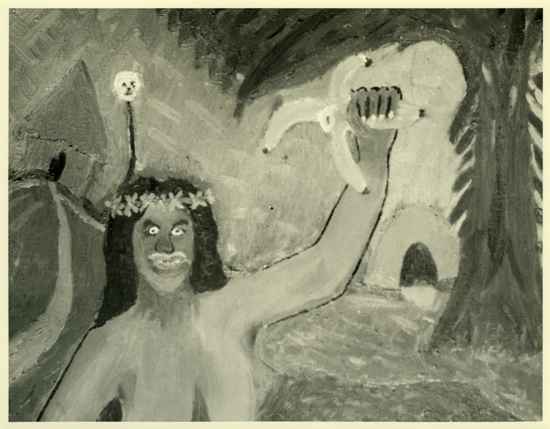
Living in Los Angeles, California, in 1924, the wife of scholar Paul Jordan-Smith had unsuccessfully submitted several still life paintings to an art gallery exhibition. In response to the harsh criticism of his wife’s work from the gallery’s judges, Smith fabricated an art movement named Disumbrationism. He quickly painted a thrown-together picture of an island-native from the South Pacific, and submitted it under the name Pavel Jerdanowitch to the jury at the Waldorf Astoria gallery, in New York. As the painting (‘Exaltation’) attracted attention from the members of the art world, Smith fabricated an entire history for Pavel Jerdanowitch, in which he was born in Russia and contracted tuberculosis while studying art in Chicago, but fully recovered while living on the South Sea Islands. Smith continued to maintain the ruse, submitting additional paintings to galleries in Chicago and gaining praise from French publications such as La Revue Moderne and Revue du vrai et du beau.
In 1927, Smith came forward and described the creation of his hoax to the Los Angeles Times. His legacy lives on, however, and an annual “International Pavel Jerdanowitch” painting contest is held in an attempt to produce the worst painting in history.
(Photo and Information Source: Reverent Entertainment. (n.d.). Disumbrationist School of Painting. In Ecclesiastes 9:11)
9

In 2007, The Netherlands’ BNN produced a controversial reality game show titled “The Big Donor Show”. The program’s premise revolved around a woman who was terminally ill and three contestants in need of kidney transplants. During the show’s run, the woman would take advice from viewers (via text messages) as to which contestant should receive her kidney after her death. Immediately following the network’s announcement of the new show, news agencies across the country began criticizing its unethical and exploitative nature.
On the night of the show (01-06-2007), it was revealed to the audience that the entire program had been an elaborate set-up. The terminally ill woman was merely an actress, and the three contestants – while truly in need of kidney transplants – were aware of the show’s false-nature from the beginning. Following the broadcast, the show’s director explained that his intent had been to draw attention to the national shortage of organ donors that the Netherlands was experiencing. The program was given the honor of winning the 2008 International Emmy award for Best Non-Scripted Entertainment, as well as the title of Best Dutch TV Moment of the Year.
(Photo and Information Source: Eideard, . (2007, June 2). Organ Donor Contest Reaches a New High in Reality TV. In Dvorak Unsorted. AND British Talent Dominates at Emmys. (2008, November 25). In BBC News)
8
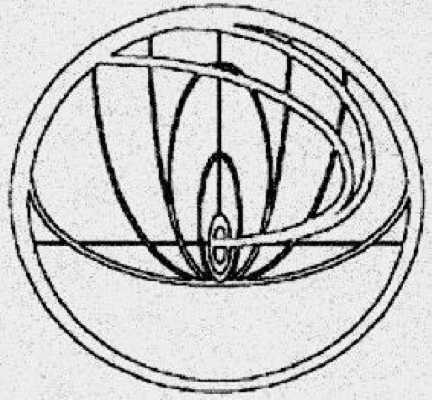
Beginning in November of 2000, Internet user “TimeTravel_0” frequented the message boards on the Time Travel Institute’s forums and discussed the realistic work that would have to be done in order to achieve time travel. He went as far as to describe what mechanical parts a working time machine would require (including an X-Ray based venting and cooling system, gravity sensors, and magnetic housing units for the machine’s engines). His posts became more detailed as time passed, and after migrating to the Art Bell BBS Forums, he adopted the username ‘John Titor’.
While on the Art Bell BBS Forums, Titor explained that he was a time traveling soldier from the year 2036, and that he had been sent back to the year 1975 to procure an IBM 5100 computer in order to properly debug several computer programs from the future. He further explained that he decided to stop in the year 2000 to retrieve personal effects that he had lost prior to his mission. He then began issuing ‘predictions/recollections’ about our future (his past), including a 2004 Presidential Election that led to extreme civil unrest, Russian Nuclear Strikes against the United States, China and Europe in 2015, and that World War III was sparked by border clashes between Jewish and Arabic citizens in the Middle East.
While skeptics questioned his story and his revelations, it was not until his claims were debunked by the passage of history that his status as an Internet hoax was widely accepted. Today, Titor’s story has been adapted to literature, several websites and a stage play. Photographs of his future-documents can also be found on several message boards dedicated to his original posts, and his Military Insignia is shown in the picture above.
(Photo and Information Source: John Titor: a Time Traveller From The Year 2036?. (2006, February 1). In BBC H2GH.AND John Titor: Time Traveler, Soldier, or Prophet?. (n.d.). In The Anomalies Network )
7
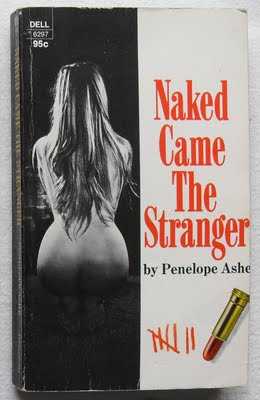
In 1969, Newsday’s Mike McGrady conspired with twenty-three fellow writers and literature critics to produce a work that reflected the poorly written texts that were quickly becoming favorites among American audiences. Each of the contributors penned a single chapter and combined them together under the title, “Naked Came the Stranger”, with the writing credit given to imaginary author ‘Penelope Ashe.’ The book describes the erotic adventures of Gillian Blake, following the discovery of her husband’s infidelity. For publicity purposes, McGrady’s sister-in-law acted as Penelope Ashe, thereby furthering the hoax’s execution.
The book quickly became a widespread hit, earning itself the number one spot on the New York Times Bestseller list for a week. The authors, having each made a good-deal of money from the book’s sales, eventually decided to expose the hoax on the David Frost Show, thereby ending the ruse. The book continued to sell, and was eventually adapted into a pornographic film of the same name.
(Photo and Information Source: Cymes, A. (n.d.). Naked Came the Stranger . In 20th Century American Bestsellers. AND http://artskooldamage.blogspot.com/2009/08/sex-swingers-dead-nymphos-naked.html)
6
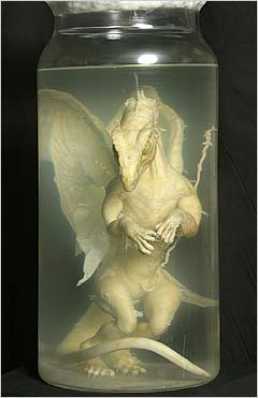
Sutton Courtenay friends David Hard and Allistair Mitchell stepped into the public eye, in December of 2003, when they claimed to have found the corpse of a dragon preserved in a jar of formaldehyde. According to their story, they had been searching through a garage when they came across a 30-inch-tall jar containing the dragon body, as well as a collection of documents detailing a past correspondence with scientists from the Natural History Museum. After gaining the attention of the media, Hart explained that his grandfather had worked at the museum and had managed to come into possession of the specimen after the museum refused to accept it into their collection.
Eventually, it was discovered that the entire story was a hoax, meant to generate attention for a novel Mitchell had been working on. It was also discovered that professional model makers, who had worked on the BBC’s Walking with Dinosaurs, had created the model, and had even gone as far as to custom-make the glass that it was contained in.
(Photo and Information Source: BBC. (2004, March 28). Book Deal for Dragon Hoax. In BBC News. AND The London Telegraph. (2004, January 29). Pickled Dragon Mystery. In Fairfax Digital)
5
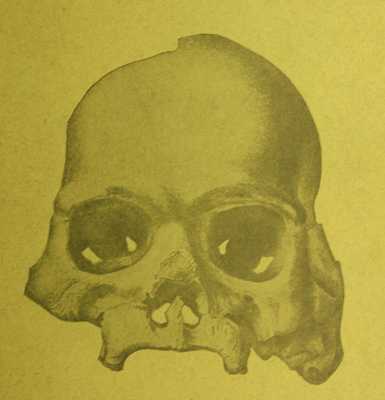
While mining in Calaveras County, California in 1866, miners discovered a human skull that had been buried in over 100 feet of lava. Josiah Whitney, a Harvard University Geology Professor, examined the skull and publicly presented it as evidence of his beliefs. Immediately following his discovery, members of the academic world began to question the validity of his findings, arguing that the skull was simply placed at the mine as a joke. Despite investigations by fellow Harvard Scientists (one of which determined the relative-recent-age of the skull through the use of fluorine analysis), Whitney continued to use the skull as proof of his historical theory.
After years of controversial publicity, the Smithsonian Institution’s William Holmes examined the skull and the area in which it was found. Holmes explained that while other organic matter from the site of the skull’s discovery matched organic fossils from the Pliocene Era, the skull was too modern in structure to have possibly been a legitimate find. To further discredit Whitney’s story, John Scribner, a friend and shop owner from the Calaveras Area, testified as to his placing of the skull at the discovery site. Today, the skull is widely recognized as a hoax in academic and archeological societies, but is still referenced in more amateur-based theories and arguments.
(Photo and Information Source: Archarological Institute of America. (2009). The Notorious Calaveras Skull. In Archaeology Magazine)
4
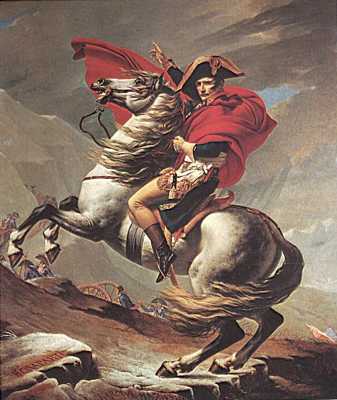
On February 21, 1814, during the Napoleonic Wars between the French Empire and its opposing forces (the Bourbons supported by the UK and other nations), a man calling himself Colonel du Bourg arrived in Dover, England, and began spreading word of Napoleon’s death. His news of the Bourbon’s victory quickly spread, and was verified by numerous other military officers who delivered the news to London and surrounding areas. In response to the newly established peacetime, the London Stock Exchange experienced a market boom, and prices on government securities skyrocketed.
However, word from French officials soon arrived, stating that the news of Napoleon’s death had been false. Stock market prices returned to their original levels, but not before several massive sales had taken place. Detecting possible fraud, the London Stock Exchange Committee began investigating the sales in question. They quickly discovered that a large collection of government stocks had been purchased a week prior to the news of Napoleon’s death, and had been sold for more than one million British Pounds. The committee charged Parliament member and former Naval enlistee Lord Cochrane with financial fraud, fined him (and his conspirators) 1,000 Pounds apiece, and sentenced them to twelve months in prison, as well as an hour of confinement in a public pillory.
(Photo and Information Source: Johnson, P. (2002). Fraud and Profit in Nineteenth Century London. In Fathom.)
3
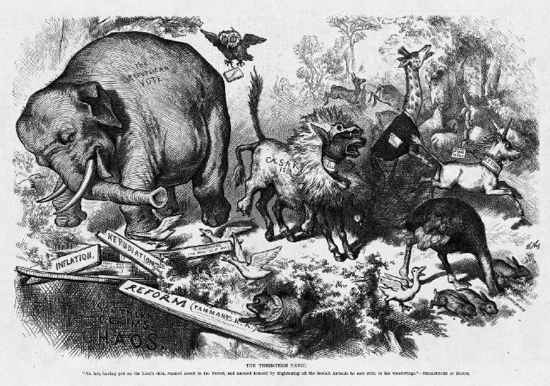
On November 9, 1874, the front page of the New York Herald told of a disastrous breach of security at the Central Park Zoo that led to the escape of the park’s animals, including, but not limited to, a Rhinoceros, an Anaconda, a Giraffe and a Lion. The reports detailed the efforts of New York City Police Officers to capture the animals, as well as the chaos that had resulted in injuries to over 200 people, and the deaths of 49 others. A panic quickly spread, and soon people were arming themselves in the streets, pulling children from schools, and barricading their homes for the inevitable stampede of wild animals.
Had the panicked citizens read the entire article however, they would have understood that the story was simply a fabrication of one of the paper’s writers. The final paragraph of the article spelled out in clear terms that the aforementioned material had been the product of fantastic thinking, and that no animals had actually escaped. Second editions of competing papers denounced the hoax on their front page and questioned the intent of the Herald’s authors in their publication of the story. As a way of apologizing and protecting their industry, Herald editors ran a story the following day that claimed the original article was meant to draw attention to security measures at the Zoo and was misinterpreted by the majority of its readers. Surprisingly, no drops in subscriptions to the Herald were recorded.
(Photo and Information Source: Museum of Hoaxes. (n.d.). The Central Park Zoo Escape. In Museum of Hoaxes)
2

At the conclusion of every NCAA Football season, two teams face off in the Tournament of Roses celebration, more commonly known as The Rose Bowl, in Pasadena, California. Traditionally, the two teams represent colleges with a well-developed and highly funded athletic program, thereby excluding most technical institutes such as M.I.T. and the California Institute of Technology (Caltech). In response to their continued absence from the event, several Caltech students (calling themselves the ‘Fiendish Fourteen’) planned to distribute flip-cards to prank audience members during the game’s halftime show.
The game began and the competition between the Washington Huskies and Minnesota Gophers commenced. By halftime, the Huskies had a 17-point lead, and cheerleaders, along with Washington’s marching band, had taken the field for the big show. As audience members held up their flip-cards, images of school mascots and other such designs were flashed out to players on the field and news cameras that were covering the game. On the last design however, the students flipped their cards and spelled out ‘CALTECH’ instead of the name of either of the schools represented in the game. News anchors laughed at the prank, and cheerleaders on the field were unable to finish their halftime routine because of the confusion stemming from the prank. The hoax was duplicated and imitated by several schools in later years, but none had been as successful as Caltech in their hijacking of the Rose Bowl.
(Photo and Information Source: The Great Rosebowl Hoax of 1961. (n.d.). In Caltec Today)
1

In the early days of widespread Internet usage, hoax-webpages managed to fool a great number of users with their shocking messages and far-fetched premises. Sites like Bonsai Kitten offered a service wherein a live cat would be trapped inside of a glass jar, and preserved in a manner resembling a Ship in a Bottle, and web surfers responded with petitions demanding the site’s cessation of debauchery. ManBeef.com took the hoax further and offered users resources related to the preparation and consumption of human flesh, meat and organs.
According to Internet traffic reports, the site experienced over half of a million visitors on a daily basis. Eventually, the Food and Drug Administration investigated the site’s claims, ultimately stating that the site was within legal parameters. due to the fact that it did not sell human meat. By June of 2001, site creators Chris Ellerby and Joseph Mallett revealed that the site was, indeed, a hoax and that they had only meant to stir up controversy among Internet users.
(Photo and Information Source: Emery, D. (n.d.). ManBeef.com Is a Hoax. In About.Com.)








